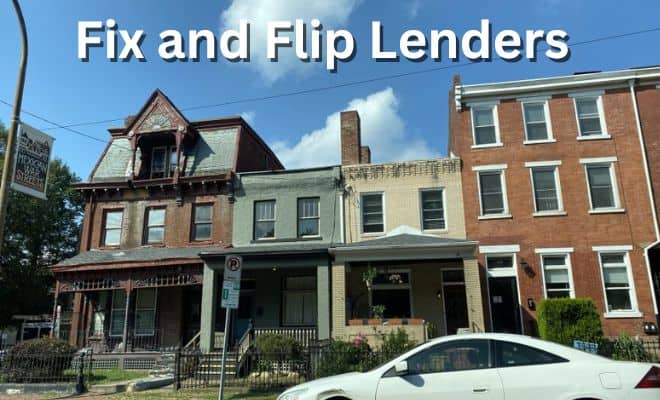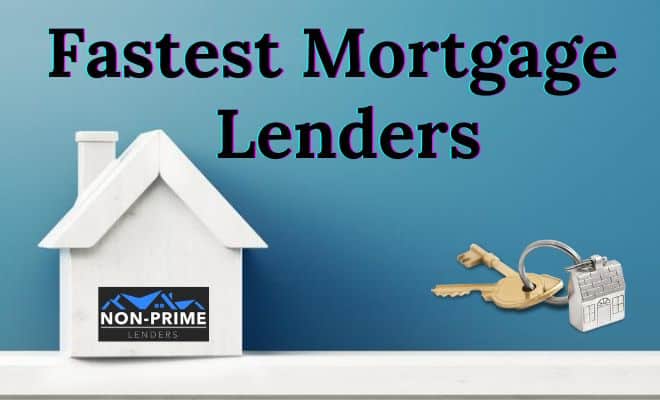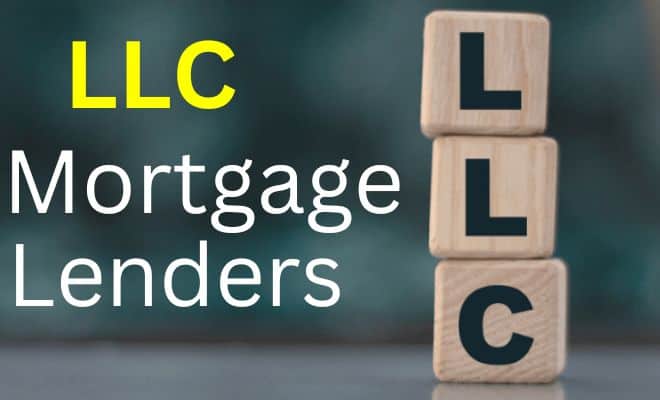Fix and Flip Lenders
Experienced fix and flip lenders who truly understand investor’s needs can be the most critical element in your investment rehab project. Fix and flip loans are offered by niche lenders when local banks are unwilling to provide financing without collecting income documentation and tax returns.
What to Know About Fix and Flip Loans
What are fix and flip loans? Real estate investors commonly use these loans to acquire and improve properties for profitable resale. They are short-term loans designed for purchasing residential properties at auctions or foreclosures, financing renovations and improvements, and covering associated expenses.
Unlike traditional mortgages, fix and flip loans offer more flexibility and faster financing options, although they may come with higher interest rates.
Various financing options, such as hard money loans, crowdfunding, and home equity lines of credit, are available for these types of loans.
Finding a reliable lender and understanding their requirements is essential when applying for a fix and flip loan. Some large investors, like We Buy Ugly Houses, pay cash for homes, but smaller real estate investors are less fortunate.
What Are Fix and Flip Loans?
A fix-and-flip loan is a type of financing used by real estate investors to purchase properties to renovate and sell for profit. We will delve into the definition and purpose of fix and flip loans and the benefits and risks for borrowers. We will also explore common scenarios where fix and flip loans are commonly utilized.
Definition and Purpose of Fix and Flip Loans
Fix and flip loans are specifically designed for short-term projects that involve acquiring distressed properties, making necessary renovations and improvements, and reselling them quickly.
The primary objective of these loans is to provide investors with the necessary funds to carry out these activities and generate a profit upon the property’s sale.
Fix and Flip Loan Benefits and Risks for Borrowers
There are several advantages associated with fix and flip loans. Firstly, these loans offer quick financing, allowing investors to seize profitable opportunities in a competitive real estate market. Additionally, fix and flip loans come with more flexible terms than traditional mortgages, making them suitable for short-term investment projects.
However, it is essential to be aware of the potential risks involved. Fix and flip loans often come with higher interest rates due to the short-term nature of the investment.
Furthermore, unexpected delays in the renovation or resale process can lead to increased holding costs, potentially reducing overall profitability.
Common Scenarios for Using Fix and Flip Loans
Fix and flip loans are commonly utilized in various scenarios within the real estate market. Some investors use these loans to purchase properties at auction or foreclosure sales, where immediate funds are necessary to secure the property.
Others may seek to fix and flip loans to finance extensive renovations, such as upgrading outdated properties or addressing significant structural issues.
Moreover, investors often seek fix and flip loans to capitalize on short-term market trends or rapidly changing property values. By acquiring distressed properties, making strategic renovations, and selling them quickly, investors can take advantage of potential profit opportunities in the market.
Understanding the definition, purpose, benefits, risks, and common scenarios associated with fixed and flip loans is the norm for seasoned and aspiring real estate investors. With this knowledge, most investors can make informed decisions when considering fix and flip financing as a viable option for their investment projects.
How Does a Fix and Flip Loan Work?
Understanding the ins and outs of fix and flip loans is the first step for real estate investors looking to fund their projects effectively. We will examine the basic mechanics of fix and flip loans, including the loan process, eligibility requirements for borrowers, and details about loan amounts and terms.
The Basics of Fix and Flip Loans
Fix and flip loans are specifically designed for investors who aim to purchase a property, renovate it, and then sell it for a profit. Unlike traditional mortgages, these loans cater to short-term projects and have more flexible requirements.
Understanding the Fix and Flip Loan Process
Investors must navigate various stages when applying for a fixed and flip loan. This involves submitting an application, providing necessary documentation, such as credit history and property details, and undergoing a thorough evaluation by the lender.
Lenders will look at the purchase price, the rehab budget and also the after repair value which is commonly referred to as the ARV.
Eligibility Requirements for Borrowers
Borrowers seeking a fix and flip loan must meet certain eligibility criteria set by the lenders. These requirements typically include a good credit score, previous experience in real estate investing, sufficient funds for a down payment, and a solid business plan for the project.
Fix and Flip Loan Amount and Terms
The loan amount available for fix and flip projects may vary based on the property’s value, the investor’s experience, and the lender’s policies. Fix and flip loans are geared towards short term loans anywhere from 3 months up to two years.
Additionally, the terms of the loan, including interest rates, repayment period, and any associated fees, will be established between the borrower and the lender. You can expect rates for fix and flip loans to be higher than conventional rates, but lower than hard money loans.
Types of Fix and Flip Loans
When financing fix and flip projects, several types of loans are available to investors, understanding these options can help you choose the right financing strategy for your needs.
Hard Money Loans for Fix and Flip Projects
Hard money loans are popular for fix-and-flip investors due to their fast approval process and flexibility. Private lenders or investment groups typically provide these loans, and the property secures them.
Since hard money loans are based on the property’s value rather than the borrower’s creditworthiness, they can be easier to qualify for and are often available to investors with less-than-perfect credit scores. However, these loans generally have higher interest rates and shorter repayment terms.
Crowdfunding as an Alternative Financing Option
In recent years, crowdfunding has emerged as a viable alternative financing option for fix and flip investors. Investors can pool their resources to fund real estate projects through online platforms.
Crowdfunding offers the opportunity to raise capital from a diverse group of investors, allowing for potentially lower interest rates and access to a larger pool of funds. However, it’s critical to carefully review the terms and fees associated with crowdfunding platforms and consider the potential impact on project timelines.
Other Financing Options for Fix and Flip Investors
In addition to hard money loans, crowdfunding, and private money lenders, fix and flip investors may explore other financing options, such as:
- Private Money Loans: Loans provided by individual investors or lenders outside traditional financial institutions.
- Refinance Cash-Out: Refinancing an existing property to pull out cash for a new investment.
- Acquisition Lines of Credit: A revolving line of credit designed for real estate investors to finance property acquisitions.
- Portfolio Loans: Loans secured by a portfolio of properties rather than a single property.
Each financing option has its own advantages and considerations. It’s important to carefully evaluate and compare each option’s terms, interest rates, fees, and eligibility requirements to find the best fit for your fix and flip projects.
Read more about private money lenders.
Fix and Flip Loan Scenario Cast Study
This is an example of a typical fix and flip loan scenario. There is a home for sale at a price of $200,000 which is below market value because the home is in disrepair.
The typical down payment to purchase a property you plan to flip is 20%. In this case, the down payment is $40,000
There are a handful of fix and flip lenders who will provide for a maximum loan amount of 75% of the after repair value (ARV). If the ARV of the home in this study is $300,000, the maximum loan amount is $225,000.
You can expect closing cost to be approximately 4% of the purchase price which would be about $8,000 in this case.
The summary of this case study is an initial out of pocket of $48,000. The cost associated with this loan is $8,000 plus any interest on your loan during the months you are rehabbing up until the point where the home is eventually sold.
Your profit margin before expenses and transaction fees is $75,000
How to Find the Right Fix and Flip Lender
When venturing into the world of fix-and-flip loans, finding the right lender can be a difference maker for the success of your project. Here are some key steps to help you in your search:
Researching and Comparing Lenders
Start by conducting thorough research on various lenders who specialize in fix and flip loans. Look for lenders who have experience in financing similar projects and have a solid reputation in the industry.
Take the time to compare their interest rates, fees, and terms to ensure you choose the most favorable option for your needs. You should also understand how long it takes to close because many investment deals need to happen quickly.
Factors to Consider When Choosing a Fix and Flip Lender
Before finalizing your decision, consider the following factors:
- Loan Approval Process: Look for lenders with a streamlined and efficient loan approval process to save time and expedite your funding.
- Flexibility: Determine if the lender offers flexible loan terms, repayment options, and the ability to adjust the loan if needed.
- Customer Service: Assess the lender’s customer service and responsiveness. Working with a lender who understands your unique needs and can provide the necessary support throughout the loan process can be helpful.
- Experience and Expertise: Consider the lender’s expertise in fix and flip loans and their understanding of the real estate market. Lenders with industry knowledge can offer valuable insights and guidance.
Tips for Building a Good Relationship with a Lender
Once you have chosen a lender, it’s essential to establish a strong and mutually beneficial relationship. Here are some tips:
- Open Communication: Maintain open and transparent communication with your lender throughout the process. Keep them informed of any updates or changes related to your project.
- Timely Payments: Ensure you make loan payments promptly to build trust and credibility with the lender. This can also help strengthen your future borrowing opportunities.
- Professionalism: Approach the lender with professionalism and respect. Treat them as your partner and value their expertise and guidance.
- Seek Guidance: Don’t hesitate to seek guidance from your lender regarding any financial or real estate-related concerns. They can provide valuable advice based on their experience.
By following these steps and building a good relationship with your lender, you increase the chances of securing the right fix and flip loan for your project and setting yourself up for success in the real estate market.
List of Fix and Flip Lenders
There are many fix and flip lenders but most of them are not commonly known. Each has their own unique guidelines and product offerings which can change at a moment’s notice.
The three most important factors even more so than the interest rates are:
- How fast the lender can close
- Down payment requirement on the purchase
- Maximum loan amount allowed based upon the after repair value (ARV)
These lenders are experienced in helping with fix and flip loan opportunities. However, your can get faster service and figure out the best option by calling us at 732-761-9041
- Dream Home Financing – Contact
- New Silver Lending – Contact
- The Investor’s Edge – Contact
- Turning Point Lending – Contact
- American Heritage Lending – Contact
Overcoming Challenges in Fix and Flip Financing
When it comes to fix and flip financing, there are several challenges that investors may encounter. Understanding and effectively managing these challenges can make or break the success of your project.
Managing the Renovation Costs
One of the main challenges in fix and flip projects is managing the renovation costs. Planning and budgeting for the necessary repairs and improvements is essential. Conduct a thorough assessment of the property’s condition and create a detailed renovation plan.
Consider obtaining multiple quotes from contractors and suppliers to ensure you get competitive pricing.
Dealing with Higher Interest Rates
Another challenge that fix and flip investors often face is higher interest rates than traditional mortgages. Since these loans are considered higher risk, lenders may charge higher interest rates to compensate for the short-term nature of the loan.
To mitigate this challenge, exploring different financing options and comparing interest rates offered by various lenders will help control costs. Additionally, improving your credit score and financial profile can help you secure more favorable interest rates.
Considering the fact that the loan is short term in nature, the higher interest rate should not have a significant impact on the profitability of the fix and flip deal.
Long-Term vs. Short-Term Financing Solutions
Choosing between long-term and short-term financing solutions is another challenge in fix-and-flip projects. Long-term financing options such as traditional mortgages offer lower interest rates but may not be suitable for short-term investments.
On the other hand, short-term financing, such as hard money loans, may have higher interest rates but provide quick funding. Carefully evaluate your project timeline and financial goals to determine the most appropriate financing solution.
Understanding Loan Repayment and Fix and Flip Construction Draws
Understanding the loan repayment process and construction draws is vital for successful fix and flip financing. Construction draws refer to disbursements made by the lender at various stages of the renovation process.
Working closely with your lender to establish clear guidelines for construction draws and ensure you have enough funds to complete the project is needed here.
Also, properly planning for loan repayment and setting aside funds for interest payments will help you avoid financial challenges.
By effectively addressing these challenges, fix and flip investors can maximize their chances of success and profitability. Understanding the intricacies of renovation costs, interest rates, financing options, and loan repayment will pave the way for a smoother and more successful fix-and-flip project.
Maximizing Profits in Fix and Flip Projects
When it comes to fixing and flipping projects, maximizing profits is the ultimate goal for real estate investors.
Investors can optimize their profits by strategically calculating the potential Return on Investment (ROI), employing effective property acquisition strategies, ensuring efficient renovations and improvements, and implementing best practices for marketing and selling the property.
Calculating the Potential ROI of Your Fix and Flip Investment
One of the key factors in maximizing profits is accurately calculating the potential ROI of a fix-and-flip project. This involves analyzing the purchase price, estimated renovation costs, and potential selling price.
Investors can make informed decisions about whether a project will likely yield a favorable return by considering market trends, comparable property sales, and the current demand for renovated homes in the area.
Strategies for Successful Property Acquisition
Successful property acquisition is a component to maximize profits in fix and flip projects. Investors should research and identify properties that offer potential value and have a high likelihood of appreciation. This may involve attending real estate auctions, working with buyer’s agents, networking with industry professionals, and leveraging online resources.
By conducting due diligence and thoroughly assessing the property’s condition, location, and potential for improvement, investors can acquire properties that align with their profit goals.
Tips for Efficient Renovations and Improvements
Managing renovations and improvements is vital for maximizing profits and minimizing expenses in fix and flip projects. Investors should prioritize cost-effective upgrades that appeal to potential buyers, such as kitchen and bathroom renovations, fresh coats of paint, landscaping improvements, and enhanced curb appeal.
Maintaining a tight project timeline, sourcing affordable materials and labor, and closely supervising the renovation process can help investors complete the project on schedule and within budget.
Best Practices for Marketing and Selling the Property
In the marketing and selling phase, investors can convert their renovated property into profits. Effective marketing strategies include professional staging, high-quality photography, enticing property descriptions, and targeted online and offline marketing campaigns. Investors should also consider partnering with experienced real estate agents who specialize in selling renovated properties.
Investors can secure a quick and profitable sale by pricing the property competitively, conducting open houses, and negotiating offers skillfully.
The Future of Fix and Flip Loans in the Real Estate Market
In today’s evolving real estate market, it’s crucial for fix and flip investors to stay ahead of emerging trends and adapt to changing conditions. The future of fix and flip loans holds opportunities and challenges, requiring investors to navigate regulatory considerations and leverage available resources and education.






